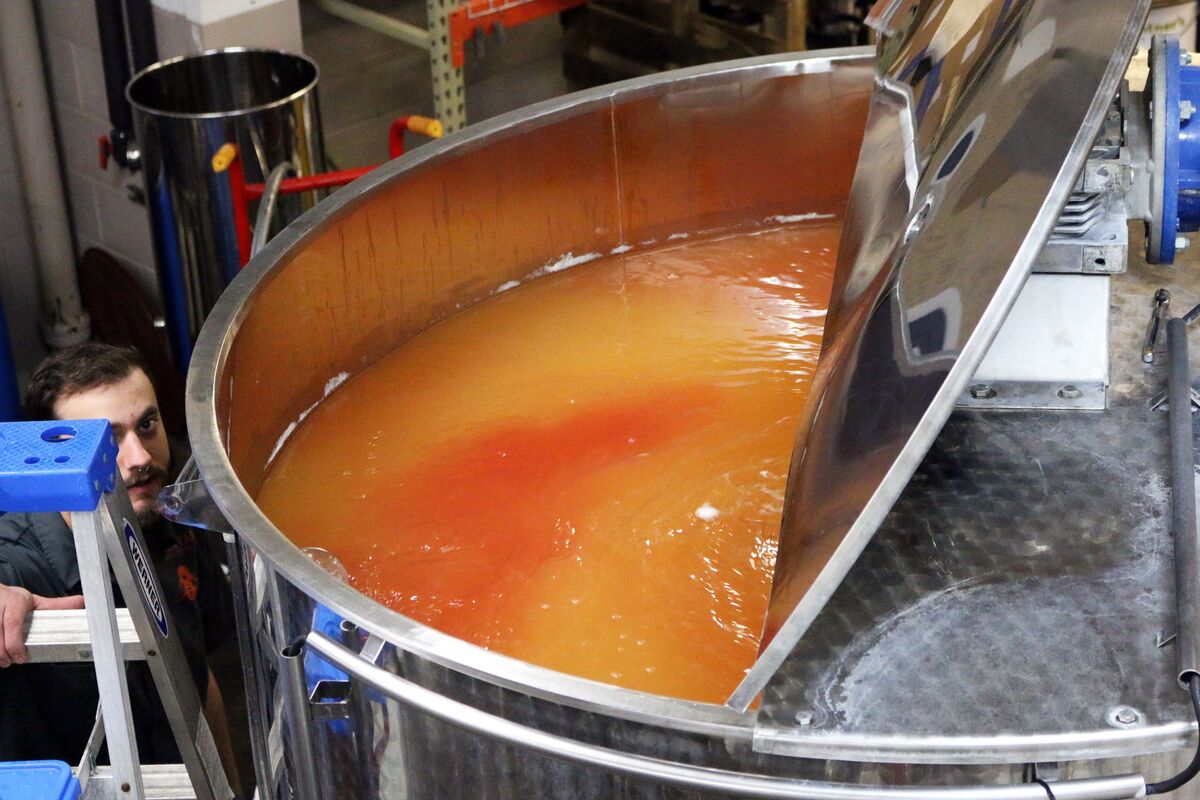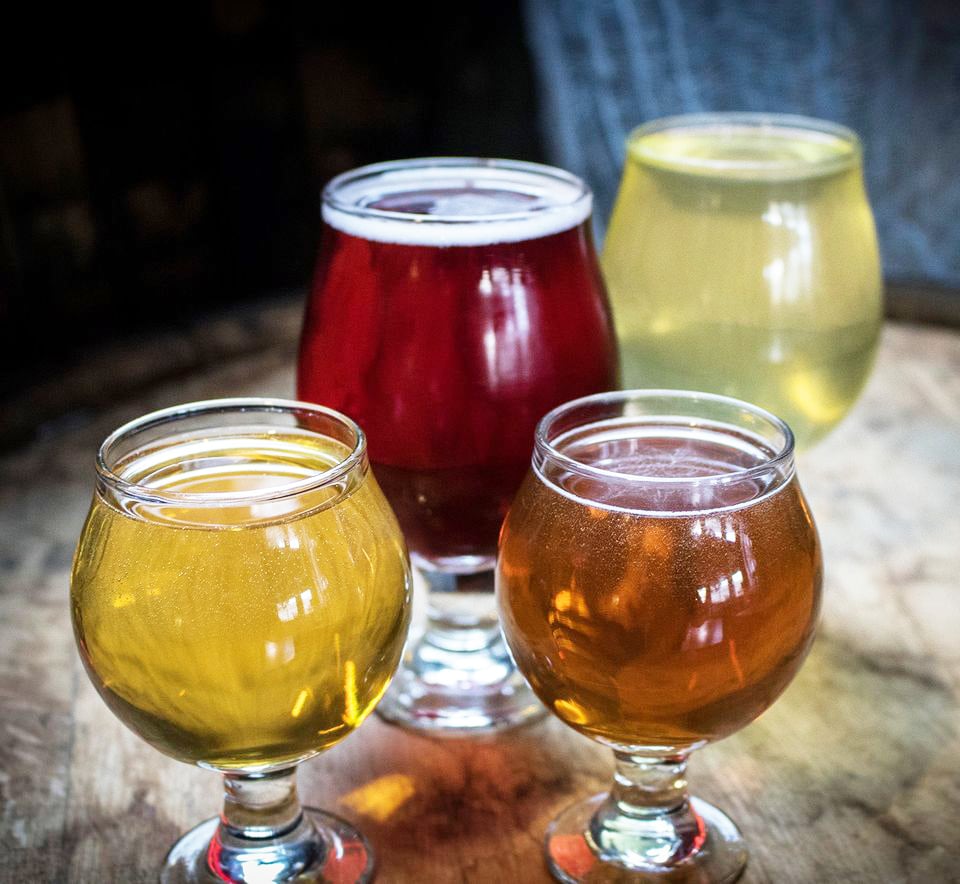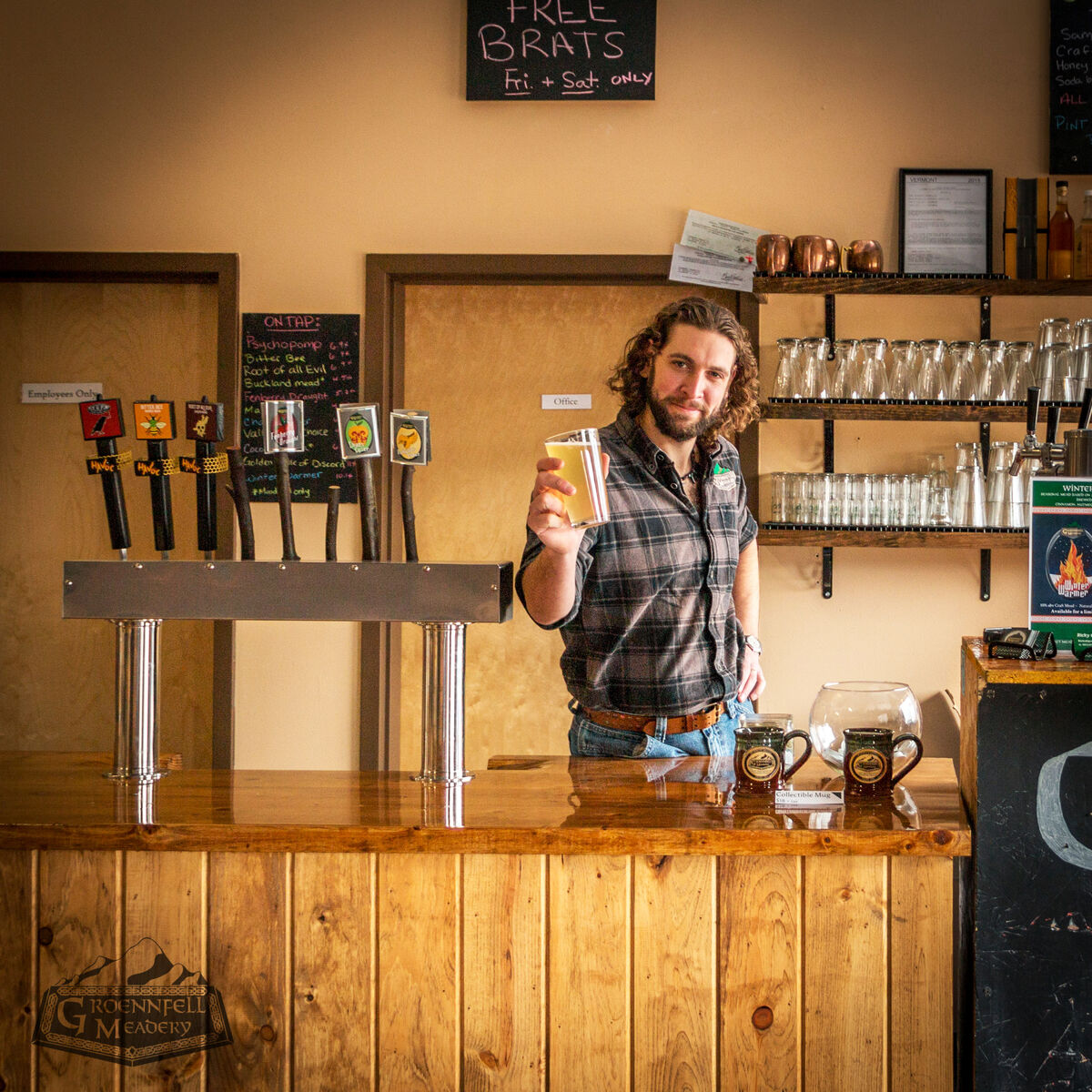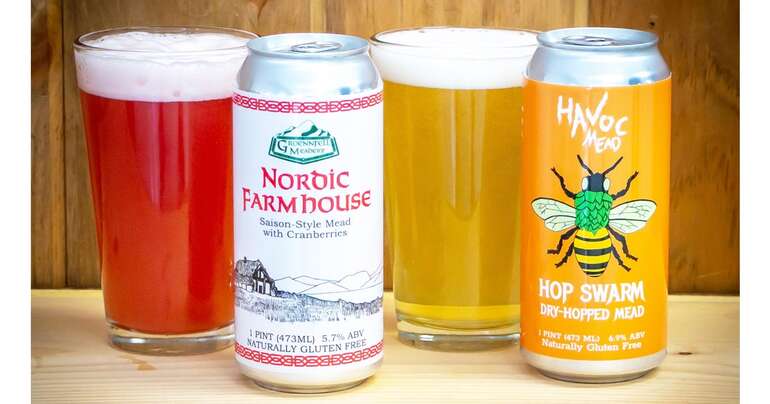Start 14-Day Trial Subscription
*No credit card required

The Beerification of Mead
For decades, people around the United States had paltry options available for mead. Even when it could be found, those options were largely limited to expensive sickly-sweet honey wines that slicked around the palate like an oil spill or homebrews that pinballed between underwhelming and rocket fuel.
Mead culture, if it existed at all, was diffuse. Pre-Internet, folks had a hard time connecting to share their successes and build that sense of camaraderie and friendly rivalry that fuels innovation.
“Every great beer brewer had a great beer, got training in beer brewing, and then began brewing great beer,” says Ricky Klein, head brewer at Groennfell Meadery and Havoc Mead in Saint Albans, Vermont. Groennfell and Havoc are sister companies, with more traditional flavors housed by the former and Klein’s experimental fare usually under the latter. “Every great meadmaker heard a story about mead and thought, ‘I want to make that stuff.’”
Klein and meadmakers like him are evolving mead away from the cloying honey-wine iterations of recent memory toward a product that resembles craft beer. As such, the smaller-scale, higher-qualities meaderies that have cropped up in recent years are producers of what can be called craft mead.
There is no consensus of what craft mead can or cannot be. “A lot of what we think of as common knowledge about mead and meadmaking hasn’t been rigorously tested yet,” says Klein.
Still, the meads available at Groennfell and other producers suggest a kind of evolving sense that craft mead could have some shared values with craft beer. These include an alcohol-by-volume at around 7%, pronounced effervescence, and a bold brewing philosophy open to trying out beer-like styles and off-beat flavor combinations.

For decades, people around the United States had paltry options available for mead, and mead culture, if it existed at all, was diffuse.
For Klein, especially, craft mead is also about cost. Mead of the last few decades was sold alongside wines at a premium price (the industry can easily see products marked up by 700%). Klein bucks at that idea and believes craft mead can best thrive at a much more affordable price point.
At B. Nektar Meadery in Ferndale, Michigan, craft mead is defined in far broader terms. Miranda Johnson, B. Nektar’s Director of Marketing & Digital Strategies, says their point of view is that there is no daylight between craft mead and the honey wines of yore.
“Meadmaking is a craft and we are proud to help lead the way in introducing it to the public,” Johnson says.
For Adam Wehr, the meadmaker at Wehrloom Meadery in Robbinsville, North Carolina, exploring yeasts are key to moving forward.
As most homebrewers know, the Lalvin suite and especially the champagne strain EC-1118 have been the bedrock of meadmaking. Wehr, however, evangelizes for a broader rethinking of how yeast can impact and even fundamentally change what comes out of fermenters.
“We do classes once a month or so,” he says, “and I always encourage people to go home and try different yeasts. That has a lot more to do with flavor profile than a lot of meadmakers give it credit for. We use yeast more typically used for ale, often it’s 001 from White Labs and a few of their other more hop-forward strains. Our yeast is a live culture and I think we get a better product from it.”
Johnson agrees that yeasts play an important role in their brand’s staying power. B. Nektar is something of an old soul in the mead landscape. It was founded in 2006 by spouses Kerri and Brad Dahlhofer, which makes them of a different era considering that two-thirds of meaderies today have been open for less than five years.
Of their yeast, B. Nektar’s Johnson says, “We have used a bunch of different variants to make sure we are using the best fit for the product. But we wouldn't give away those secrets... You know, it is like grandma's really amazing recipe that you just don't get to know all the ingredients without having to really be trusted.”
If it is important enough to be a company secret, clearly it means a great deal to the success of their product.
The meads available from these three producers show how much room there is in meadmaking to explore and pioneer. It is interesting, though, to consider the overarching qualities that connect all three. Alcohols between 5% - 8% (except the occasional honey wine at double that), fruits mingling with roots like ginger and spices that bring to mind the flavors of farmhouse ales, and, of course, hops.

“Meadmaking is a craft and we are proud to help lead the way in introducing it to the public,” says Miranda Johnson, B. Nektar’s Director of Marketing & Digital Strategies.
“Meadmaking is a craft and we are proud to help lead the way in introducing it to the public,” Johnson says.
These flavor profiles make education and outreach all the more vital. Folks who have only tried meads that ape dessert wine or whatever went into their college roommate’s homebrew are unlikely to recognize the dense and delicate flavors that craft meadmakers are serving now.
Wehr says, “Our biggest challenge is just getting it in people’s mouths. Ninety-nine percent of people convert to it instantly.”
For Klein, many come to Groennfell’s fare believing, falsely, that mead is a very narrow category.
He says, “We get reviews on Untappd and Facebook that mead is supposed to be super-high in alcohol, knock you on your ass, pucker-your-lips sweet, but we’re there to help tell our story and set the expectations that it can be something different, too.”
Gordon Hull understands this issue. He is the head meadmaker and owner of Heidrun Meadery in Point Reyes, California. Heidrun has a different viewpoint from the meaderies listed above. Hull and his team focus with artisan precision on letting the honey’s inborn flavors unfurl, so the mead might express the essence of the nectar and the flowers that created the honey.
There are no adjuncts or brewer’s tricks to coax out flavor. Flavors in a bottle of Heidrun Mead are solely the result of brewing with honey, yeast and water.

For Adam Wehr, the meadmaker at Wehrloom Meadery in Robbinsville, North Carolina, exploring yeasts are key to moving forward in the world of mead.
His Madras Carrot Blossom and Oregon Pumpkin Blossom are notable, though. While most of his meads, brewed in the méthode champenoise, are very wine-like, the carrot and pumpkin blossoms are indistinguishable from a high-quality Belgian ale or saison.
The Carrot Blossom is the more intense of the two with pronounced incense, while the Pumpkin Blossom is slightly soured akin to a Lambic. Both, though, are full-flavored, dry, and crisping with effervescence. The honey wants to show these qualities, and Hull wants to get out of its way while it does so.
“The reaction to Carrot Blossom, especially, can be so diverse,” says Hull. “All meads have a steep learning curve, but that one can be tricky for people. We always start a tasting with some of the lighter varietals and when it’s time for Carrot or Pumpkin Blossom, we preface it for our guests that it’s going to be a treat for those with a beer-oriented or adventurous palate. And, if someone doesn’t like beer, they may not care for it. It can be almost fifty-fifty for the Carrot Blossom. People who love it tend to be very loyal to it.”
Amid all of this experimentation, this growing variety of mead options, there is another key component seeping in from the beer world––collegiality. In one sense brewers and meadmakers compete with each other, but that aspect is almost always balanced by a sense of community, of “we’re-in-this-together.”
Klein likens it to the food truck business, which is notoriously egalitarian. It is quite common for the owner of one food truck to fill in if another food truck is short-staffed. Klein recalls how, just a few days ago, he spotted another brewer some hops, and how another time a competitor/colleague in another market gave him a tip on the best distributor in the area.
“There’s this sense that we can be friends with each other, but still try to compete in a meaningful way. The market is getting big enough, also, where everyone is doing this wild stuff and we’re all reacting to each other and pushing these ideas further, in unexpected directions. Something is finally happening in our industry that I did not expect to see––chasing. It’s really nice. It sounds a little bad, but it means meadmakers are emulating stuff that’s working.”




